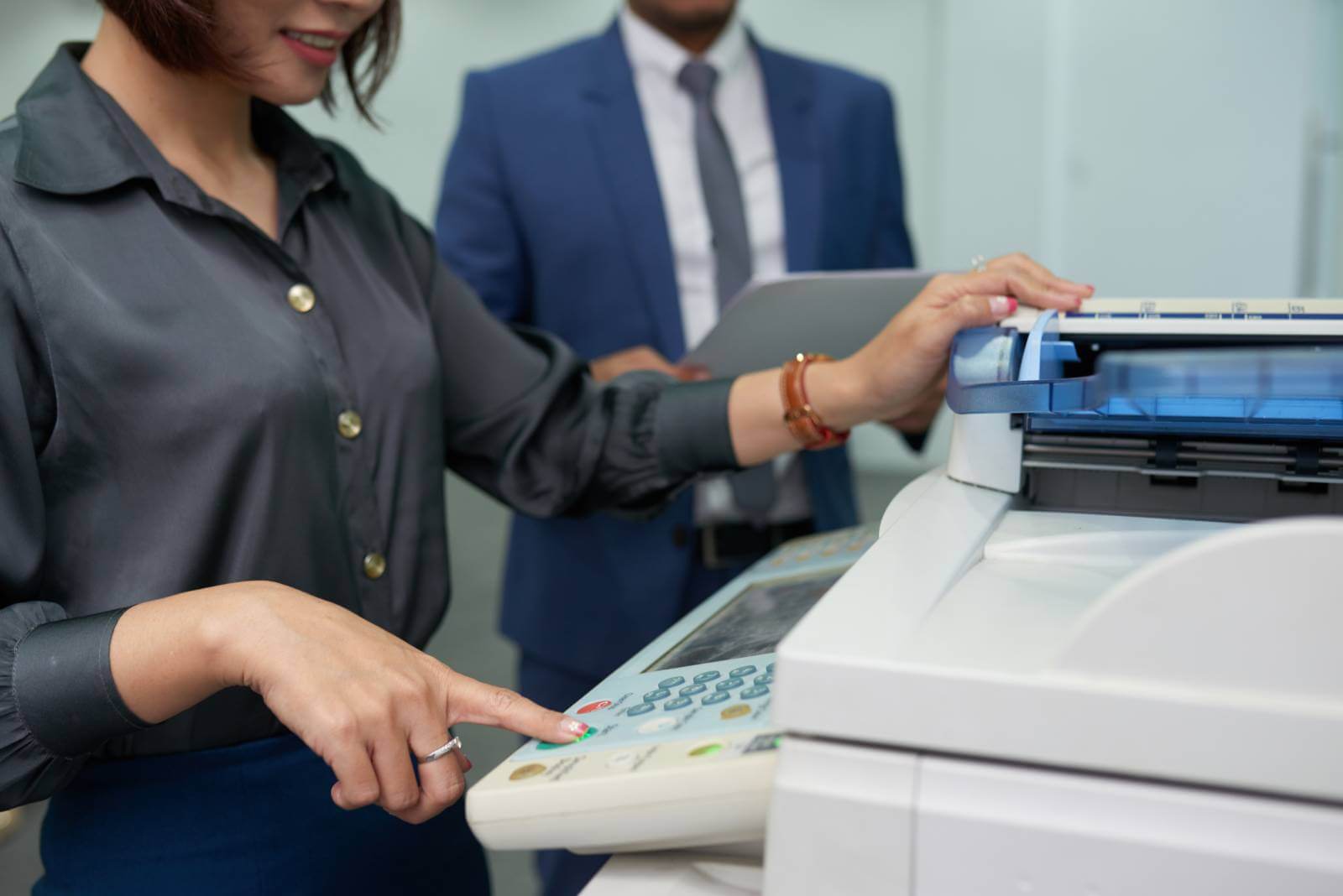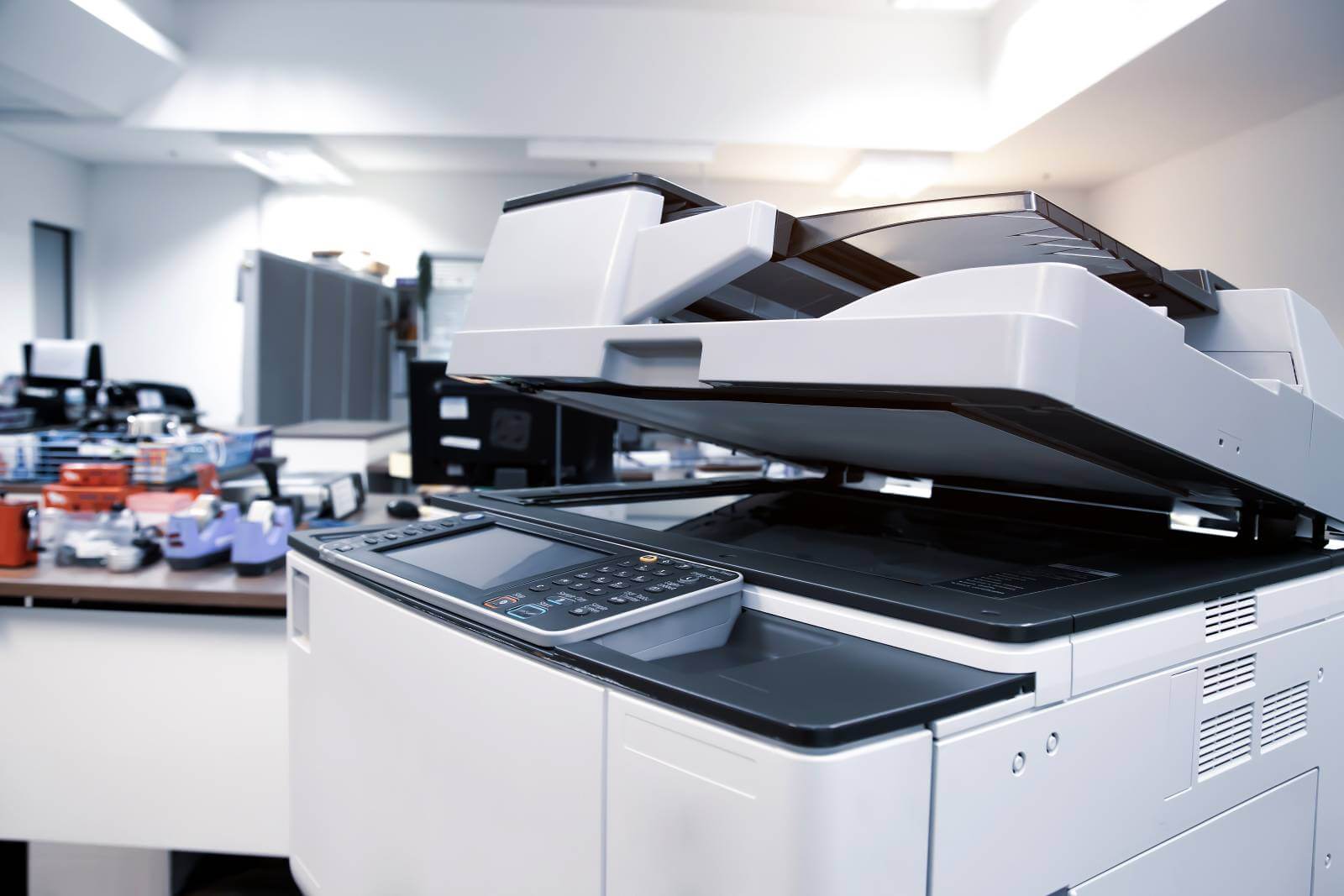
What to consider when buying a printer?
Things to consider when buying a printer
Business printers are a necessity for most offices. Unfortunately, the vast number of printers available on the market, in a very wide range of quality and usability, makes choosing one more difficult than it should be, and flipping a coin isn't an option, because even though printers aren't all that expensive, they still represent a sizable investment. Ask yourself three questions when shopping for a home printer: Do you want a laser or inkjet printer, how much is too much when buying replacement ink and cartridges, and what special features would you like to meet your specific needs.
Have you ever wished you had a personal assistant that would offer you, wise counsel when purchasing a printer? You want the advice, but you don't want the pushy salesman or someone who works on commission to help you. Let me serve as your virtual personal assistant and show you what to look for when buying a printer.
Nobody wants to purchase something, only to wonder if they made the right decision, or worse yet, feel guilty for having purchased something that they didn't know if they should get or not. All of the questions I am about to ask you are meant to help you come to a confident decision in purchasing a new printer, whatever that decision may be.
What Will You Use The Printer For?
The first thing that you need to determine is what the printer will be used for. Not answering this question is like buying a car without giving any consideration to what the car will be used for. Why would you purchase a gas-guzzling SUV when your commute to work is an hour or more away? You don't want to buy more than you need, and you also want to make sure that whatever you purchase is the right fit for your needs.
Will your kids primarily be using this printer so that they can print out their homework assignments? Will you be using it for light home-office work, or is this a business printer that you will be purchasing? Will you be printing lots of photos? How about your kids, will they be using it? If so, that means that you will want to get a colour printer. If not, you can probably save a lot of money by purchasing a monochrome printer.
How many people will be using this printer?
The reason you want to answer this question is that you want to make sure that the printer is hefty enough to meet your needs.
For example, printers for home use will generally have a printer capable of about 250 sheets of paper. In contrast, small business printers will have a much larger capacity for paper, usually from multiple feed trays.
Also, a plan for growth. In other words, if you are going to use this printer for your business, don't plan on purchasing a printer for the staff you have now. Purchase the printer that your staff will grow into one year from now-plan to grow into it. Don't just get the bare essentials.
Knowing just how many people will be using the printer will help you determine if you require a workhorse printer or not. Do you need it to print very fast, one that can handle the heavy volume or just a simple printer that you will use once in a while?
Are you purchasing this for Home use for Business use?
You need to answer this question because if you are using the printer for home use, it just won't get used as much as a business printer would. Even if you think that your kids will be using it for school projects, etc., a printer used for business will almost certainly get more use than one used in the home.
The more people that will be using the printer, the more robust of a printer you will need to purchase. Why? Because workhorse printers are designed to work like a horse.
You don't want to buy more than you need, and you don't want to buy something that does not quite match up to your daily use. In either case, you won't be happy with your purchase.

Here are five things to consider when purchasing a printer.
Image Quality
Depending on your target market, your image quality requirements may differ. Here are a few points to consider:
Resolution- Printers that can produce a minimum of 1200dpi print resolution would suit fine art reproduction and photography well. Most printers have many resolution modes, so be sure to find one that has a wide range of capabilities in terms of print resolution (an example would be 360dpi-2880dpi, covering various modes in between).
Colour Gamut- Some newer printers have improved ink sets which widen the printable gamut you can achieve. Gamut comparisons are sometimes included in printer brochures or information kits, so check the available downloads at the manufacturer's site. Another quick way to judge achievable gamut with various printers is to download the manufacturer's included ICC profiles for the printer you are considering.
Density- Ink density translates to rich, deep, vibrant colours. Different ink sets can achieve higher or lower ink densities, so it's important to compare printed samples. If you have a densitometer, try to get black and white photos and take delta readings of the black ink density. This is usually a good indication of which ink set can yield higher densities.
Ink Droplet Size- Droplet size is typically measured in picoliters, so look for a printer capable of droplet size of around 4-12pl. A lower number means a smaller droplet, and a smaller droplet translates to a sharper image. Some printers have a larger or smaller droplet size, so a printed sample of a high-resolution image will help you determine if the prints will be sharp enough. A general rule is the droplets should not be visible to the naked eye from the intended viewing distance of the print.
Ink Configuration- Printers have a variety of ink configurations generally ranging from 4 colours, 6, 8, and 12 colour machines. Generally speaking, the more colours a printer has, the wider the colour gamut it can achieve. But this is also relative to the quality of the profile that is being used for printing as well. The inclusion of Orange and Green inks on many new printer models contribute to a wider gamut and more attainable colours. Light versions of existing colours (Ex: Light Cyan, Light Magenta) help in smoothing gradations and improve black and white printing.
ICC Profiles- Are there available ICC profiles for the media you wish to use? If you manage your colour, is the printer easy to profile? Does the printer accurately reproduce colour over time, or does it need constant re-profiling? Look for product reviews that mention profiling capabilities.
Size & Speed
The size of the printer will depend on what image sizes you wish to offer. Do you currently own a 17″ wide printer and are not sure whether to invest in a 24″ or make the jump to 44″? If you can't answer this question, let your customers help!
Determine what sizes are most requested, and this will be a great starting point. Ask your customers what sizes they would be most interested in if you had larger print capabilities. Look at what print size options are available on the web, and you'll get a good idea of what's most common.
If you print canvas, determine how much additional canvas you'll need for stretching when you have larger print capabilities. This can be factored into the total print width that the printer is capable of. Wider printers usually can handle longer and heavier rolls, which can translate into overall media savings (versus printing sheets or shorter roll lengths).
Speed is an important aspect that should not be overlooked if you need to achieve a particular amount of output each day or week. Keep in mind that faster print speeds typically mean a decrease in image resolution, so find printers that can achieve faster speeds while retaining resolution.
Be aware that in some cases you may have to compromise quality for speed or vice versa. As stated above, most printers have various settings for resolution, so test a few methods and see what the best results are in terms of speed and quality combined.
Media Handling
Make a list of everything you currently print on. Now add the media you would like to start using to that list. Newer printers have expanded capabilities for 3rd party media, so find a printer that can handle everything you wish to throw at it! While some printers might be better suited for photography, others may be geared more towards outdoor signage and short term graphics. Do you know what other printmakers in your target market are using?
Media thickness is also something to consider, so look at a printer's specifications sheet to find out what paper thickness it can handle. If you can see the printer in action, make a note of how it handles various media that is loaded.
Does thick media load easily? What about sheet-fed media and manual loading trays? You certainly don't want to struggle to use your new printer, so look for these points when demoing a new printer.

Ease of Use
Sometimes we get so caught up in features and specifications that we forget the importance of usability. Having a printer that is easy to use means less frustration and troubleshooting. If there will be more than one user, production can be seamless if there is less guesswork with the printer and its settings. Ask these questions when trying to determine the ease of use:
-
- Is it easy to unload and load media?
-
- Is the printer's control panel easy to navigate through and understand?
-
- Is the printer driver easy to set up and use?
-
- How much control does the printer give the user?
-
- Is it easy enough to show others how to use it?
-
- Can you save customized settings and details from recalling for future print jobs?
-
- Can you hit "Print" and walk away?
Support
Usually, the most overlooked aspect when buying a printer is product support. Struggling to get a product working properly can be quite a frustrating experience. Before buying a printer, find out what's supported:
-
- Is phone/email support included?
-
- Does the technical support staff respond quickly?
-
- Do you have access to an expert or experienced users?
-
- Are parts end-user replaceable? Do parts require a service technician to replace?
-
- Is there access to tutorial videos and instructional documents?
-
- If there are any known issues, are there working solutions or workarounds?
-
- If my printer completely goes down, how long before I'm back up and running?
Laser or Inkjet?
Laser and inkjet are the two main types of printers that a business must decide between. The main difference between the two is that an inkjet printer uses ink to print documents, while a laser printer uses a laser.
However, additional minute differences between the two exist that can lead to discrepancies in speed, image quality, and functionality. Based on your needs, you may favour one type of printer over the other.
Laser printers are best suited for those who:
-
- Print high volumes of black and white documents
-
- Need fast printers with large print capacity
-
- Do not need gallery-quality photo prints
-
- Need a printer for an office− Laser printers tend to be large and heavy, which makes them less suited for home offices
-
- Don't mind that toner cartridges tend to be more expensive than ink cartridges for inkjet printers− However, keep in mind that while they're more expensive up-front, they last much longer than ink cartridges
Inkjet printers are best suited for those who:
-
- Require high-quality images− Inkjet printers have better tonal variety and are better at blending colours
-
- Print on a wide variety of paper types− Laser printers cannot print on paper that's heat-sensitive, which limits the types you can use
-
- Don't print that often− These printers tend to be slower, and their paper trays may not hold as much
Service
The level of customer service you experience with a local dealer cannot be beaten. In general, small local businesses have lean teams that can afford to personalize your experience and consistently follow up to ensure that your needs are addressed.
Local dealers build service pricing into your contract, which makes any repairs easier to budget for. Additionally, since your local dealer's shop is located nearby, they can usually send a technician to your location to fix your machine that same day.
Price
While a printer from a major retailer can be cheaper, the prices they charge for cartridges can be as much as five times more expensive than local dealers. Both major retailers and local dealers can negotiate with you for lower prices on machines, but local dealers can keep cartridge prices much lower.
Local dealers try to maintain margins through their service contracts, which is why they value keeping cartridge prices low in an effort to have business with a customer consistently. Major retailers know that a customer may only need a cartridge every few months, which is why they charge so much.
Additionally, when factoring price into the purchase of a printer, consider downtime costs. If your printer purchased from a major retailer breaks, you may be out of a printer for a month while you ship away your printer for repairs. The costs associated with this scenario can quickly add up, as opposed to a local dealer who can usually fix your printer that day.
If you don't print that often and business operations wouldn't be greatly hindered from printer downtime, a major retailer could make more economic sense if their machine prices are lower.
Consider A Managed Print Service

Didn't consider all the factors involved when working out a desktop printing plan for the office? You're not alone!
If it seems overwhelming, you may want to consider a managed print service, (or MPS.)
Managed print takes desktop printers off your organization's plate entirely. A good MPS program will provide your toner, service, and supplies without a hitch. They may even be able to offer a replacement program for select devices! This means that your purchasing department is juggling toner orders, and IT doesn't have to waste their valuable time taking care of a busted printer.
An MPS provider can not only provide guidance when it comes to purchasing new printers; they can help your operation function effectively enough to reduce replacements, to begin with!
If you're interested in the benefits of a managed print service, we'd love to chat with you. Our Kloud is one of the leading office technology companies in Melbourne. We'd be happy to chat with you about your environment and can even provide a free print assessment to calculate your current fleet's total cost of operation accurately.
Aside from the type of printer and price to run it, a number of other factors are worth considering. These are features that might make a printer a little more suitable for the way you intend to use it. Printers with larger touch screen readouts are nearly always easier to operate than those with extremely small ones. Likewise, larger paper trays need filling much less often than small ones do. Many printers will also scan documents, making them a little more useful than models that don't have that function. Print quality is also important, as is the print speed for those who plan to print multiple pages at a time frequently. Lastly, compact printers take up much less space on your desk than do larger ones, leaving more room for other, more important items.